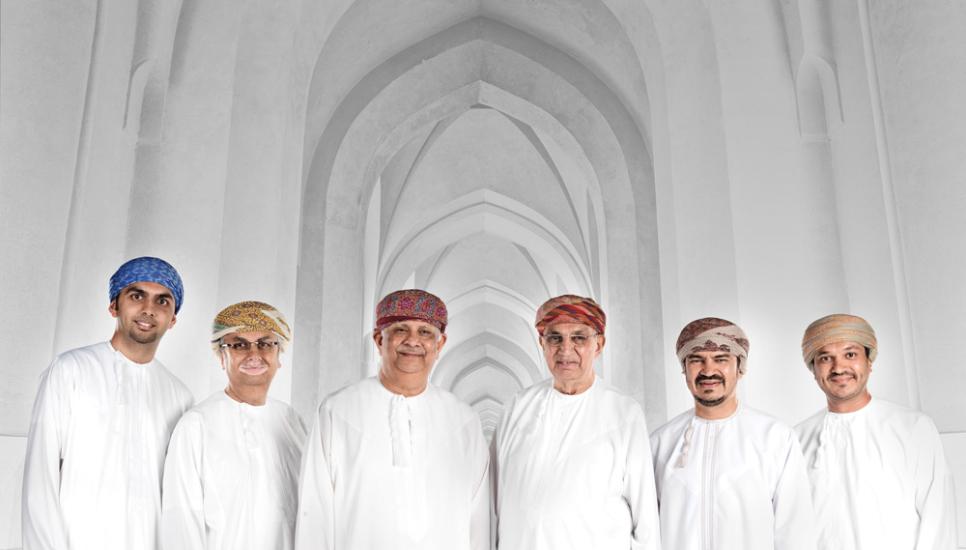Khimji Ramdas Group: Governance and leadership in the Middle East

Khimji Ramdas Group started as a trade-based family business in Oman in 1870 and is now a diversified conglomerate working with more than 400 global brands. In the second of this four-part series of case studies, Zita Nikoletta Verbenyi reports on two governance challenges overcome by the Ramdas family.
The Khimji Ramdas Group (KR) is a multigenerational family conglomerate established in 1870 in the Sultanate of Oman after the patriarch, Ramdas Thackersey, along with his son Khimji Ramdas moved to the Sultanate from Mandvi, Kutch a coastal town in Gujarat, India.The family immigrated to Oman as it used to trade using its own ships between Africa and India - Oman was used as a hub.
The family-run group fast became one of the country's largest and most respected conglomerates with multinational operations trusted by more than 400 global brands and leadership positions in the consumer, infrastructure, and industrial sectors. The family business is headquartered in Muscat and has diversified operations in four strategic groups: consumer products, infrastructure, lifestyle, and projects and logistics.
The Khimji family has worked with at least five Sultans in the past, the current Sultan, Qaboos bin Said, is already in the ninth generation and has been in charge for 45 years leading through the country's renaissance period which has seen a huge development of ground-breaking infrastructure projects and education. The Khimji family has benefitted immensely by the stability the country provided.
The family is highly conscious of the importance of “giving back”, and have been active philanthropists for more than 60 years both in Oman and in India. They run three schools in Gujarat, including a boarding school for girls and in Oman the family is engaged with non-government organisations, government bodies, and directly supporting people in education, early interventions, and individuals with special needs.
Ownership, board composition & non-family member employees
There are currently six shareholders within KR; three brothers from the fourth generation, Kanaksi Khimji, Anil Khimji, and Ajay Khimji, Kanaksi's two sons, Pankaj Khimji and Nailesh Khimji, and Ajay Khimji's eldest son, Hritik Khimji. The split in between the shareholders is not even and is based on inheritance. The board has a non-family member, the group's chief financial officer, and the plan for the next six months is to add two more board members to increase from six to eight board members.
The four major units that make up KR Group are headed by different non-family chief executives directly reporting to the board and to one specific family member who is appointed to look after and guide a division. For example, Anil was responsible for the luxury and lifestyle division, which now is been taken over from him by his nephew Nailesh, who previously worked on the consumer unit which is the largest and oldest out of the four. Family members do not take executive decisions, but only offer strategic guidance and act as ambassadors of the company.
At the moment the company is not a holding company, however it has devoted serious focus to corporate governance. The company's constitution and structure is implemented and within a year the family will have a clear idea on the ownership structure - whether there is a holding company or six holding companies owning the shares.
While in a stereotypical family, members of the next generation are associated with all the risk-taking activities, within the Khimjis family, it is quite the opposite. The two members of the fourth generation are the entrepreneurs who are used to risks, and the fifth generation is trying to implement structural changes and avoid major risks.
Trust and respect are in the forefront of the family, and every major decision is approved by the board, and decided on as unanimously as possible. It does not matter if one is a majority or a minority shareholder; everyone has an equal say.
Two challenges around governance and their solutions
Challenge 1: A boys-only club
Although it is now the fifth generation involved in the business, the family has never had women on their board, nor becoming part of their business. Anil only has a daughter, and started to think to whom to give his shares; to his brothers, nephews or if he were allowed to leave them to his daughter. Then Pankaj's daughter returned home after graduating from university and wanted to be involved in the business. The family realised they should embrace and encourage the female members of the family too. Also, Anil's daughter is now given the ambassadorial and guiding role of the consumer group after Nailesh took over the luxury & lifestyle unit.
The family believes that leadership is linked to family unity. A strong framework and any future changes should reflect these, for instance adding representatives of family units on board and bringing all family members together. The current challenge is whether to allow spouses into the family too. The Khimjis are trying to find ways to distribute shares held in trusts, or in a holding company where dividends could be given to spouses.
Solution 1: A female perspective
With Anil's daughter being the only direct heiress, the family started to re-evaluate their decision behind the board and unanimously agreed to let daughters inherit her father's shares, as Anil would not have been able to pass them to anyone else. This approved active involvement by a female family member changed the perspective and the family agreed that they would allow their sisters to key positions and own shares from the fifth generation onwards. The family believes that blood line is important and as long as they are certain number of board seats, it does not matter how many shareholders there will be in the future. The family is planning to have eight family shareholding board seats and three independent members.
The Khimjis did not organise a family assembly in order to bring the family members together, they ran a two day family conference instead. It was a perfect occasion where everyone could get a perspective on how other family members worked. For the first time, all the stakeholders of the family business including spouses and children above sixteen were involved. Although family members do see each other every month, the family event was very educational and a new experience for everyone; even if they did not go into financial figures or discuss any fiscal issues.
Challenge 2: Outdated corporate structures?
Kanaksi bought out his brother from the business in 1999 and they removed four shareholders, reducing the number of shareholders to five. The remaining five felt that they should make drastic changes in the business, introduce a more solid corporate framework for all, and grow the business exponentially. There were around 120 employees over 65 years within the group (including two family members), hence the need for age reform was strongly required.
Solution 2: A family-run to family-owned system
The shareholders decided to take on professionals in run the executive functions – most of these head hunted chief executives are still in place in their division. One retired, and one has passed away, however the latter was replaced from within the business. Two of the current chief executives first started as teenagers joining as their first job and working themselves up the ranks. They clearly understand the business like no one else does. Two of them are professional chief executives, of whom one is to retire, with a replacement already appointed.
A very smooth handover process has been unfolding. The company has grown more than tenfold since 1999 and it is debt-free with no loans. The Khimji Ramdas family is much better off as a family-owned company than as a family-run group. The family aspires to share this practice with the next generation in order for them to adopt and evolve it further.
The current compensation policy is satisfactory, however the new board structure may mean a change to this policy. At the moment the Khimjis do not give any compensation to the board members, they are however granted with an office, a secretary, a carallowance, and all professional trips are paid. The Khimji family reports its dividends every quarter and this sum gets divided according to the shareholding structure. In order to avoid any conflict of interest or tension within the group, which could be for instance caused by a non-performing family member, the Khimjis do not encourage family members to work in the business. Instead, all family members are challenged to get exposure abroad in other companies around the world or in Oman. Once they gained external professional experience they can join the board. Also, if these family members would wish to learn about the business, they will receive training across the four main divisions, but not as a full-time occupation.
Family members decided to rotate themselves every three to five years within the four main divisions in order to run them efficiently and refreshed with ideas. This way board members get experience in the main verticals, and understand all parts of the business. Principals will also get to know all family members, their strengths, and expectations too.
A retirement policy was introduced in March 2015 with 65 as the cut-off age. Anyone older than that is given a one-year notice to find themselves a successor and to train them. To lead the change by example, the family has given the same route out of everyday involvement to the two current elders of the family, Kanaksi and Anil. However instead of a year of notice they were given three years, for instance Kanaksi is turning 80, and is happy to retire, although he will still go to the office often.
Future focus
The group's major focus is on Oman, however KR has had a strong trading presence in the United Arab Emirates (UAE) since the early 1920s, traditional business with India, and evolving links with Iran and Turkey.
KR's operations in India have continued to run smoothly, as they have been trading there for over hundred years, buying the production of Omani dates through government auctions or directly from the farmers, and selling them in India through family-run businesses. Nailesh moved to Oman from the UAE in 2007 and got very much involved in the consumer group. He easily started to expand in India, after drawing on his experience earned working with all the largest fast-moving consumer goods distributions, including Procter & Gamble (P&G) and Philip Morris, in the UAE. Nailesh set up a new office six years ago which was to help the group's distribution for P&G in Gujarat. The family professionalised the business in India with solid plans and structures, relying on P&G principals to help in their endeavours. KR Group will strive to replicate the success of its Indian operations in Iran and in Turkey too. Sultan Qaboos bin Saidhas built excellent relationships in Iran, playing an instrumental role in pushing through the end of the embargo in between the US and Iran.
Expansion in India has a sentimental attachment, as after a long time the Khimji family is reaching back to their roots. The only major difference now, is that the company in India is 100% Omani. When they came to Oman originally it was as100% Indian.
Conclusion
The Sultanate of Oman has been a very stable country, which helped the Khimji Ramdas family to achieve great heights in terms of size and in diversification too. The family has expanded its leadership group from six to eight board members and is getting female family members involved where previously it had been male-only. It has also reformed its retirement policy to assist in succession.
Its main achievement has been moving from a family-run to a family-owned company employing competent non-family executives to run its operating businesses and stepping back from day-to-day operations to provide strategic direction.





